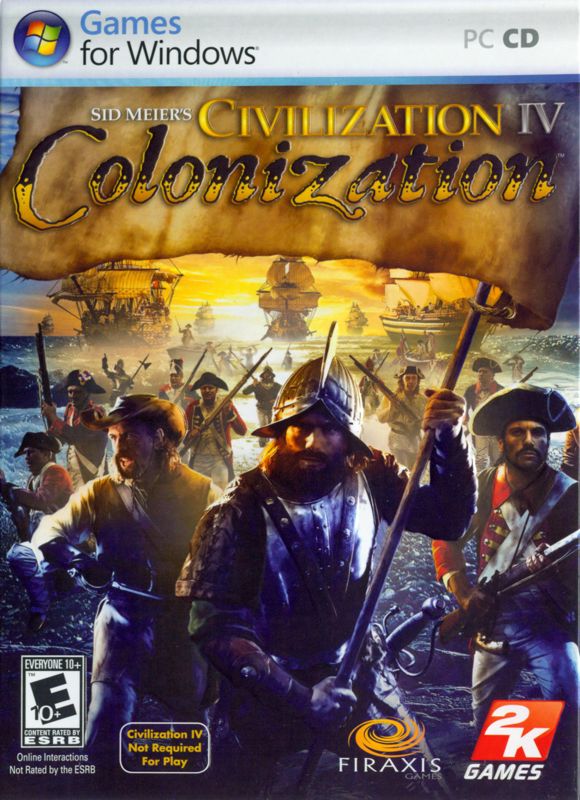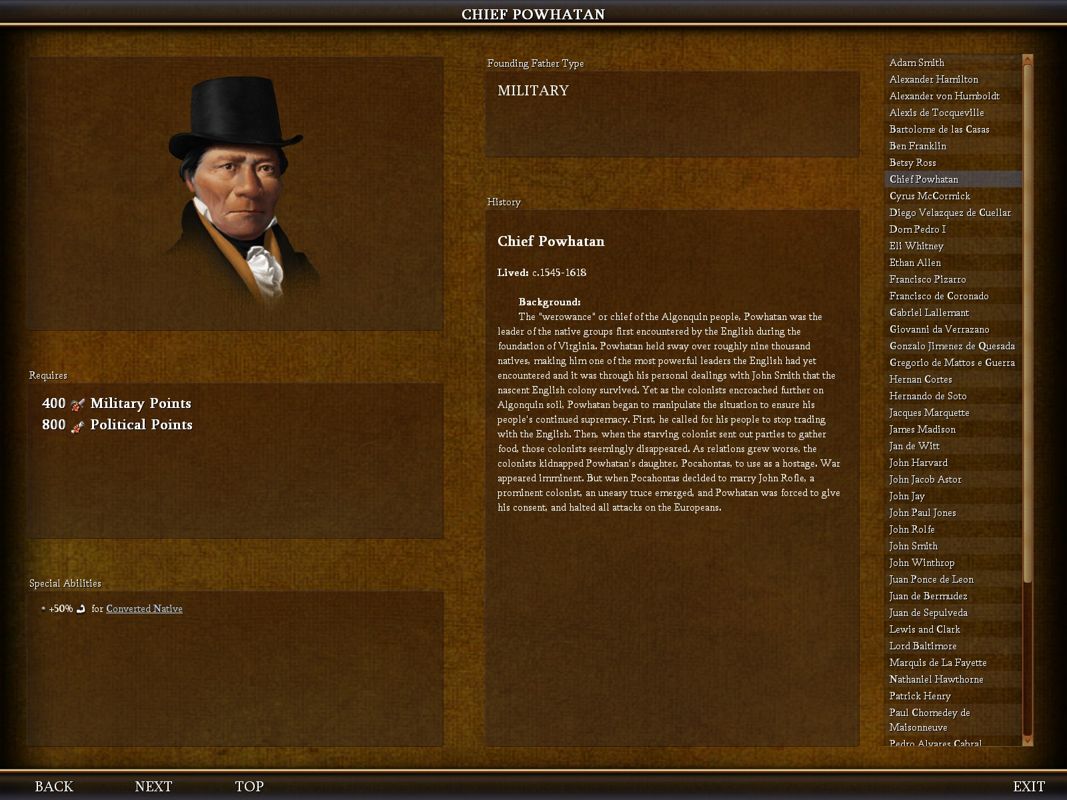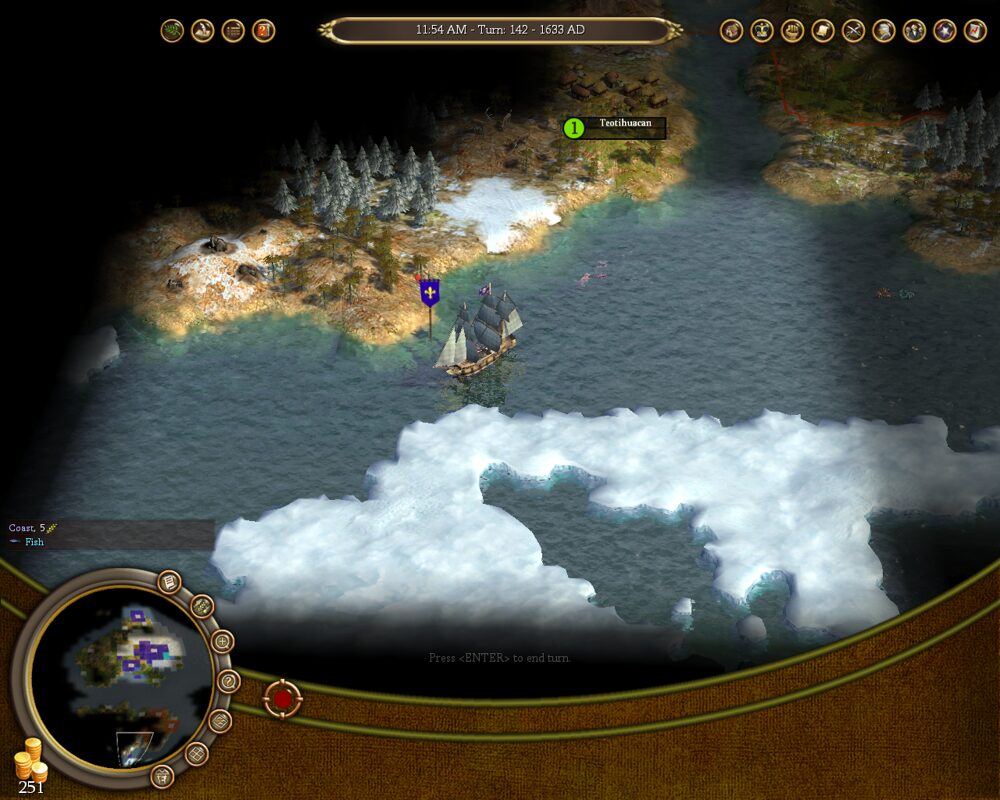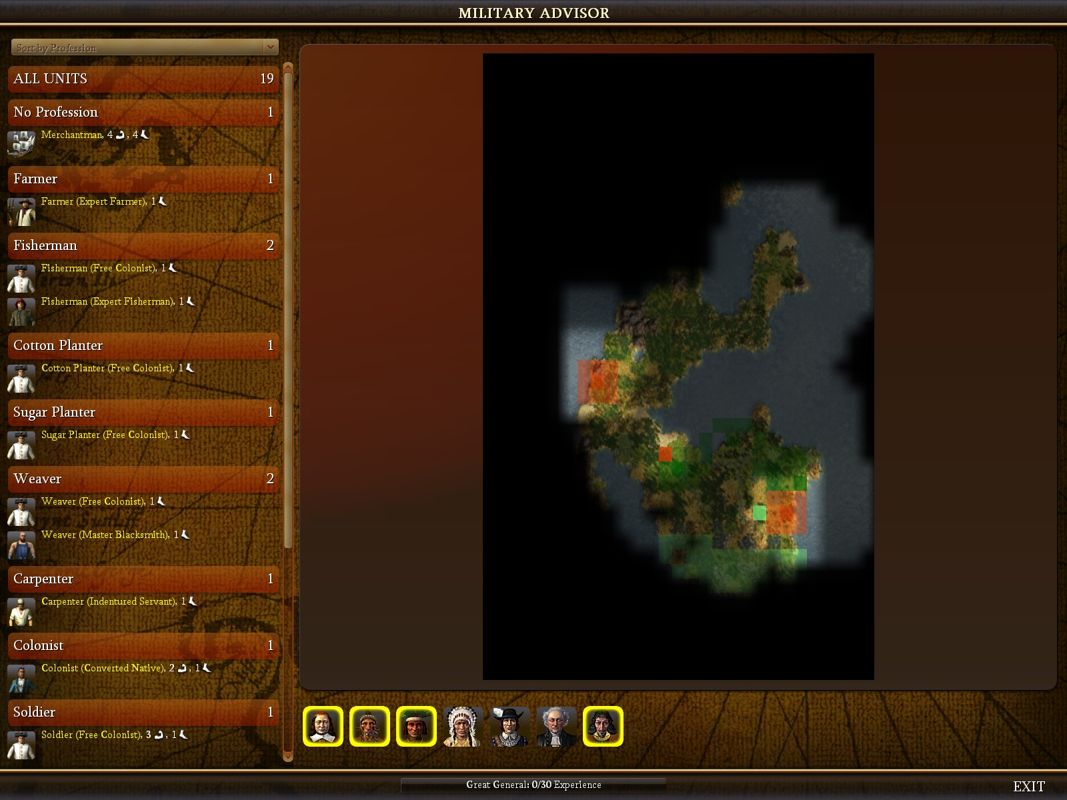Retro Replay Review
Gameplay
Sid Meier’s Civilization IV: Colonization places you in the role of a Viceroy in the early 1500s, tasked with carving out a thriving colony and ultimately declaring independence from the Old World. You begin with a lone ship carrying your chosen Viceroy and a handful of settlers, landing on procedurally generated terrain or a map based on actual North America. From your first settlement, you must balance exploration, settlement planning, resource gathering, and diplomacy with Native American tribes and rival colonial powers.
Each colonial power—England, Spain, France, and the Netherlands—offers unique bonuses and starting units, and you can fine-tune your strategy by selecting one of two Viceroys per nation. Early game decisions center on choosing settlement sites that offer access to food, raw materials, and native trade goods. As your population grows, settlers can be assigned to farms, workshops, and religious establishments, or trained as specialized masters whose improved efficiency lays the groundwork for economic prosperity.
Trade is a cornerstone of gameplay: you ship goods back to Europe to earn crown favor and hard cash, negotiate deals with competing nations, or barter with native tribes. However, Europe’s market is also a source of pain points—tax levies, demands for tribute, and changing political winds increase your drive toward independence. To declare freedom, you must generate sufficient “Liberty Bells” in your city halls, maintain favorable relationships with colonists and natives, and secure the agreement of at least half your citizens.
Graphics
While rooted in the Civilization IV engine, Colonization adds its own visual polish, offering sharper unit portraits, refined city icons, and more detailed terrain textures than its 1994 predecessor. The map’s hexagonal grid is laid out with clear, distinct tiles, making it easy to identify forests, rivers, hills, and resource deposits at a glance. The color palette strikes a good balance—lush greens for fertile plains, muted browns for unsettled wilderness, and rich blues for navigable waterways.
Animations are modest but effective. Units marching, ships sailing, and buildings under construction are accompanied by subtle movement and sound cues that convey a sense of ongoing activity without overwhelming the player. Special buildings such as Weaving Mills or Religious Shrines sport unique icons, allowing for quick recognition of your colony’s industrial and cultural hubs. In multiplayer mode, performance remains solid, with minimal lag even when multiple players share a sprawling map.
Cutscenes and interface elements borrow heavily from Civilization IV, retaining the same stat panels and advisor screens with minor tweaks to reflect Colonization’s colonial theme. The user interface is intuitive: tooltips provide clear explanations for resource yields, trade values, and diplomatic modifiers. The game’s sound design—sea shanties, colonial fanfare, and ambient wilderness noises—further immerses you in the era of exploration and empire building.
Story
Although Colonization is fundamentally a sandbox strategy game, it weaves an emergent narrative through player-driven goals and historical flavor. Each playthrough feels like a personal tale of hardship and triumph as you guide your settlers from humble beginnings to a bold declaration of independence. The race against time—complete your revolution before 1800—adds tension and purpose to your decisions, shaping the story of your fledgling nation.
Founding Fathers introduce another layer of narrative depth. As you fulfill specific in-game criteria—be it religious influence, military strength, or economic output—you attract historical figures like Benjamin Franklin or John Adams. Their unique bonuses and animated portraits help humanize the abstract concepts of administration and governance, turning your colonial endeavor into a saga of mentorship and political maneuvering.
Interactions with Native American tribes further enrich the storyline. Peaceful trade agreements, shared land claims, or, conversely, hostile skirmishes each branch the narrative in different directions. You might forge an alliance that grants you access to furs and ivory, or wage frontier wars that test your military prowess. This dynamic diplomacy ensures that no two campaigns unfold identically, making each declaration of independence a distinctive chapter in your personal colonial chronicle.
Overall Experience
Sid Meier’s Civilization IV: Colonization succeeds in delivering a deep, rewarding strategy experience that honors its 1994 origins while modernizing gameplay and visuals. Its learning curve is approachable for series veterans and newcomers alike, thanks to clear tutorials and a streamlined interface, yet it retains enough complexity to satisfy hardcore strategists. Balancing economic growth, diplomatic finesse, and military readiness keeps players engaged through multiple playthroughs.
Multiplayer mode extends the game’s replay value, allowing up to four players to compete or cooperate in the race for New World supremacy. Customizable victory conditions and map options cater to different playstyles: whether you prefer a fast-paced race for independence or a sprawling, centuries-long campaign, you can tailor the challenge to your liking. Even after achieving independence, the game shifts into a thrilling war of attrition against your former mother country, providing a climactic finale.
Ultimately, Colonization stands out as a refined spin-off of the Civilization IV engine, marrying historical context with strategic depth. Its engaging economic systems, thoughtful diplomacy, and emergent storytelling create a compelling package for any strategy enthusiast. If you’re looking for a game that combines empire-building with the drama of revolution, this rebooted classic delivers a consistently satisfying and replayable adventure.
 Retro Replay Retro Replay gaming reviews, news, emulation, geek stuff and more!
Retro Replay Retro Replay gaming reviews, news, emulation, geek stuff and more!









Reviews
There are no reviews yet.